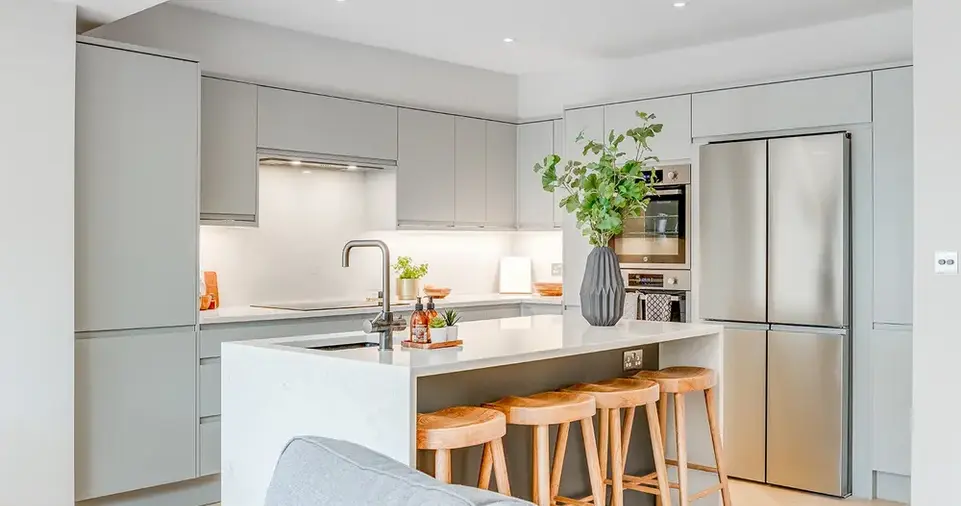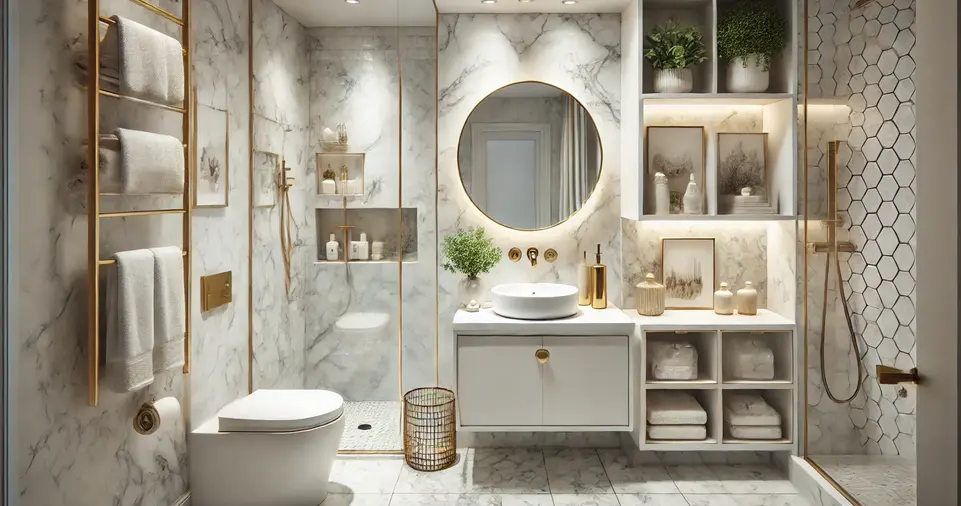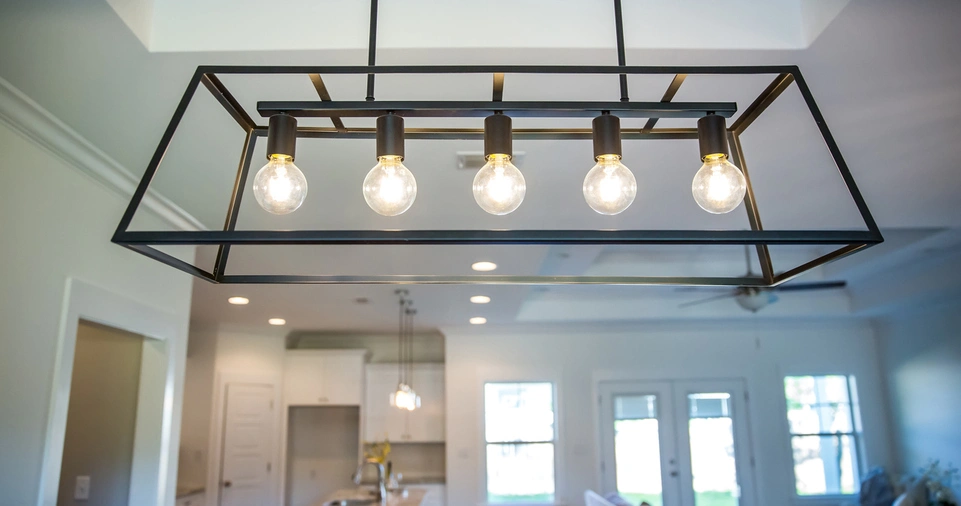Lighting plays a crucial role in the ambiance, functionality, and aesthetic appeal of your home.
Whether you’re designing a new space or updating your existing home, choosing the perfect lighting for each room is essential for creating a comfortable, welcoming, and efficient environment.
The right lighting can transform any space—brighten a dim corner, make a small room feel more expansive, or create a relaxing, intimate atmosphere.
However, selecting the right lighting involves more than just choosing fixtures and bulbs. It requires understanding the unique needs of each room and how light influences mood, productivity, and style.
Each room in your home has specific lighting requirements, and how you light each one can affect the overall feel of the space.
Some rooms need bright task lighting to aid daily activities, while others require soft, warm lighting to promote relaxation.
The key is to layer your lighting—using ambient, task, and accent lighting—to create a harmonious balance.
From choosing the right light bulbs to selecting fixtures that complement your room’s decor, this guide will walk you through how to pick the ideal lighting for every room in your home, with detailed tips on style, functionality, and best practices for each area.
Living Room: A Cozy, Functional Space
Layered Lighting for Maximum Comfort
The living room is one of the most versatile spaces in the home, serving as a place for both relaxation and socialization.
To make it a functional and welcoming area, it’s essential to use layered lighting. Layered lighting refers to using a combination of ambient, task, and accent lighting to create balance and depth.
Ambient Lighting:
Start with ambient lighting to provide overall illumination. This can come from ceiling lights like chandeliers, recessed lighting, or pendant lights.
Ambient lighting should be soft and even to ensure the entire room is well-lit without harsh glares.
Dimmer switches can be used to adjust the intensity of the light, creating different moods depending on the time of day or the activity at hand.
Task Lighting:
Task lighting helps with specific activities, such as reading, working, or knitting. Floor lamps or table lamps placed strategically around the room can provide focused lighting for these tasks.
Be sure to choose lamps with adjustable heads or arms so that you can direct the light where it’s needed most.
Accent Lighting:
Accent lighting is used to highlight artwork, architectural features, or focal points in the room.
Wall sconces, picture lights, and even LED strips under the sofa or along the baseboards can create a dramatic effect while adding a touch of style to the space.
By layering these different types of lighting, you can create a dynamic, functional, and aesthetically pleasing living room that suits a variety of activities, from movie nights to family gatherings.
Tips for Lighting a Large Living Room
If you have a large living room, it’s important to incorporate more lighting sources to avoid dark corners and create an inviting environment.
Consider adding extra lamps and light fixtures, or use larger pendant lights to ensure that the room is illuminated evenly.
Use multiple sources of light at different heights to add dimension to the space.
Kitchen: Bright and Functional Lighting for Cooking

Task Lighting for the Kitchen
In the kitchen, lighting is paramount for ensuring safety and functionality.
Whether you’re chopping vegetables, cooking, or cleaning, you need clear and bright lighting that helps you see everything clearly.
The most important consideration when lighting the kitchen is task lighting.
Under-Cabinet Lighting:
Under-cabinet lights are perfect for illuminating your countertops and workspaces.
These lights are typically installed under the cabinets to provide focused illumination directly onto the work surfaces, reducing shadows and improving visibility.
Pendant Lighting:
For areas like kitchen islands or countertops, pendant lights are a stylish and functional choice.
Hang them at the right height to provide focused task lighting without causing glare.
Recessed Lighting:
Recessed lighting installed in the ceiling is a great option for general overhead lighting.
It provides even illumination without taking up any space, making it perfect for a modern kitchen.
Ambient and Accent Lighting
While task lighting is essential in the kitchen, don’t overlook ambient lighting and accent lighting to enhance the room’s overall feel.
Overhead Lights:
In addition to task lighting, a central light fixture or ceiling lights can provide ambient lighting for the entire room.
Accent Lighting:
Accent lighting in the kitchen can be used to highlight design elements like shelves, decorative items, or a unique backsplash.
Under-shelf lighting or track lighting can draw attention to these features.
The key to kitchen lighting is functionality, so make sure the light fixtures are bright enough for cooking but also adaptable to create a warm and inviting atmosphere for dining or socializing.
Bedroom: Relaxing and Soft Lighting
Creating a Calm and Cozy Atmosphere
The bedroom is your sanctuary, and the lighting should be soothing and conducive to relaxation.
Soft, warm lighting helps create a calming atmosphere that promotes rest and unwinding after a long day. Avoid harsh overhead lights and opt for soft, diffused light sources instead.
Bedside Lamps:
Place table lamps on either side of the bed for convenient lighting. Choose lamps with soft, warm bulbs and adjustable brightness for different needs.
Dimmer switches are a great way to adjust the lighting depending on the time of day and the mood you want to set.
Wall Sconces:
If you have limited space on your nightstands, consider wall sconces that can be mounted next to the bed. These can provide soft, ambient lighting and are perfect for reading before bed.
Accent Lighting:
Consider adding some accent lighting to create a cozy, intimate atmosphere. String lights, fairy lights, or a small pendant light can all work to create a warm and inviting feel.
Lighting for Small Bedrooms
In smaller bedrooms, lighting can help make the space feel larger. Use mirrored or glass lamps to create a sense of openness.
Consider using bright, but soft overhead lights or wall-mounted fixtures that free up space on the floor.
ALSO READ: How to Choose the Perfect Lighting for Every Room in Your Home
Bathroom: Bright and Practical Lighting

Focused Lighting for Grooming
The bathroom needs clear, bright lighting to help with grooming tasks such as shaving, applying makeup, or styling hair.
Choose light fixtures that provide even, shadow-free lighting around mirrors.
Vanity Lights:
Place vanity lights above or beside your mirror for even illumination.
Wall-mounted fixtures or lights that extend from the mirror are ideal, as they eliminate shadows and provide light from multiple angles.
Overhead Lighting:
In addition to vanity lights, a central overhead fixture provides ambient lighting throughout the bathroom.
Consider installing a dimmer switch to control the brightness depending on the time of day.
Task Lighting:
For specific tasks like applying makeup, install additional task lighting around the mirror.
This can come in the form of LED bulbs or vanity lights that are designed to mimic natural daylight.
Creating a Spa-like Atmosphere
If you want to create a relaxing, spa-like atmosphere in your bathroom, consider adding some soft accent lighting.
LED strips around the bathtub, dimmed overhead lights, or small wall sconces can create a tranquil, soft glow.
Dining Room: Elegant and Inviting Lighting
The Right Light Fixture for the Dining Table
The dining room requires focused, yet elegant lighting to highlight the table while creating a warm and welcoming atmosphere.
A well-chosen light fixture can serve as a focal point for the room, adding both functionality and style.
Chandeliers:
A chandelier is a popular choice for dining rooms, offering both elegant design and ample lighting.
Ensure the chandelier is proportional to the size of your dining table—too large can overwhelm the space, while too small may leave the room inadequately lit.
Pendant Lights:
Pendant lights provide more direct lighting and are ideal for modern dining rooms.
Place them directly above the table to create a visually striking effect. Multiple pendants can be used in a row over larger tables.
Dimmer Switches for Versatility
Install a dimmer switch for your dining room lighting. This allows you to adjust the brightness depending on the mood, whether it’s a family meal or a formal dinner party.
ALSO READ: Choosing the Right Outdoor Lighting for Your Yard
Conclusion
Lighting is a key element in creating a functional and beautiful home.
By understanding the needs of each room, you can select the perfect lighting that enhances the space, provides adequate illumination for tasks, and sets the right mood.
Whether you’re brightening your kitchen, creating a cozy living room, or designing a relaxing bedroom, the right lighting makes all the difference.
Always remember to layer your lighting and choose fixtures that complement your style and the functionality of the room.
With the right lighting, your home will feel welcoming, warm, and tailored to your needs.







